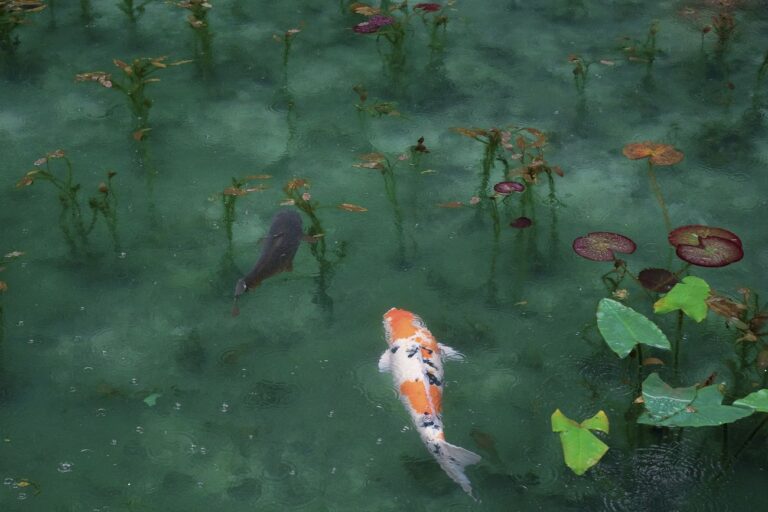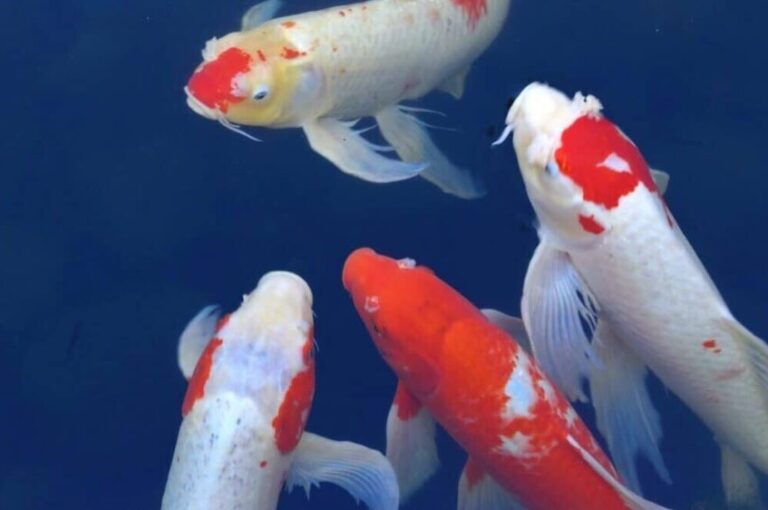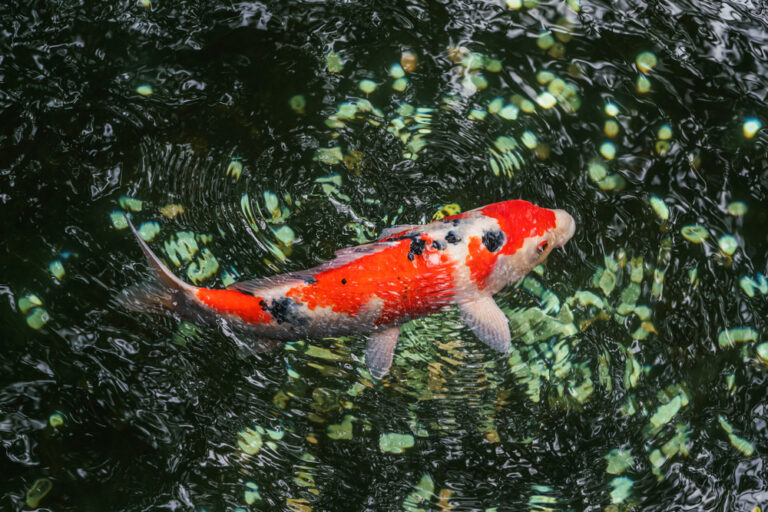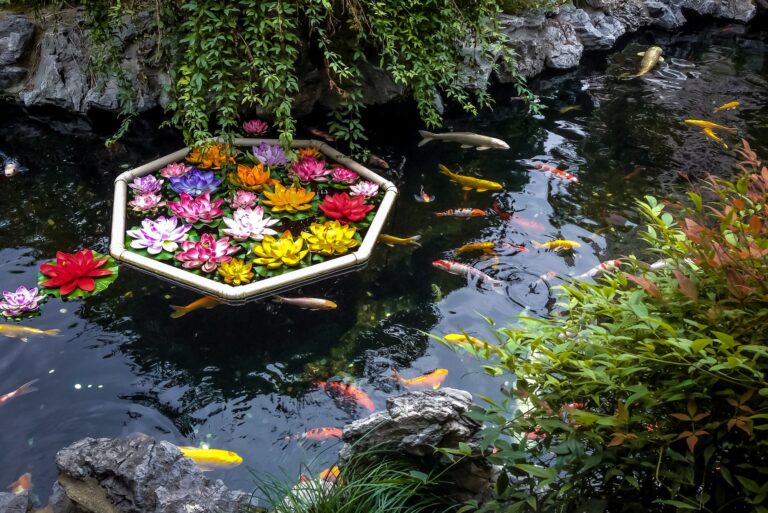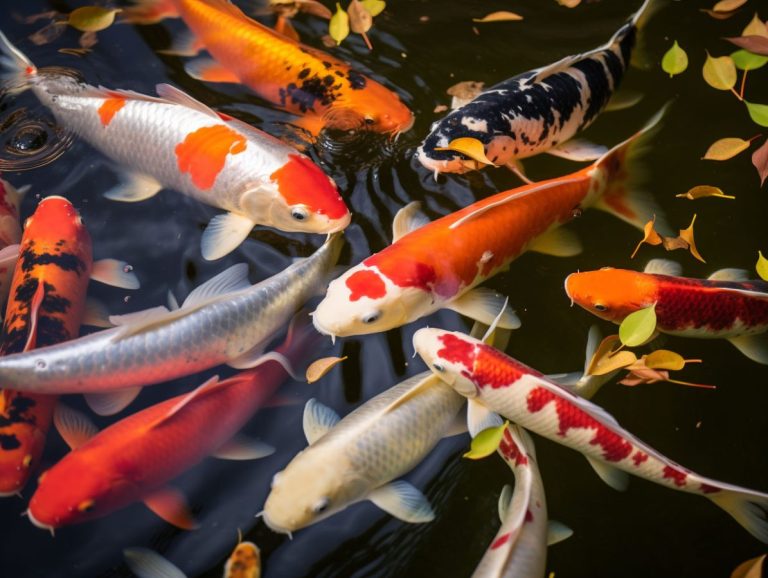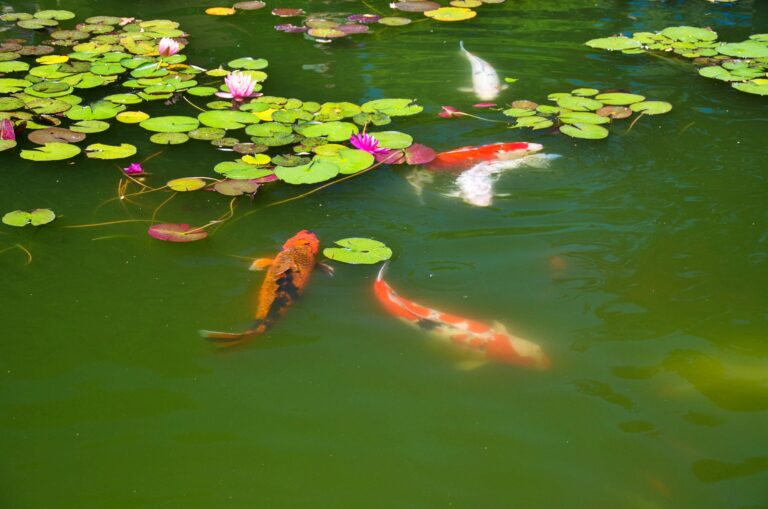Sure Fire Ways To Get Rid Of Pond Algae Fast
Are you tired of looking at that murky green pond water? Are you fed up with the slimy algae clogging up your pond? If so, you’re not alone. Do you want step-by-step advice on how to get rid of pond algae as quickly and safely as possible? Algae can be a real nuisance in ponds, and many homeowners struggle to eliminate it. But don’t despair – there are plenty of ways to tackle this problem and get your pond back to its former glory.
First, let’s look at what causes algae to grow in ponds in the first place. Most pond algae are caused by an overabundance of nutrients such as phosphates or nitrates that enter the water from fertilizers, decaying organic matter, fish waste, and other sources. An imbalance between the amount of sunlight entering the water and the shade aquatic plants provides can also cause excess algae growth.
Now that we understand what causes pond algae growth let’s move on to our top tips for the best pond algae remover. So if you’re ready to fight against those pesky green blooms, read on! We’ll cover everything from physical removal methods to chemical treatments that can help limit further growth.
Definition And Types Of Algae
Algae are aquatic plants found in many water sources, including ponds. They come in various shapes and sizes, from microscopic single-celled organisms to large, multi-cellular seaweeds. Algae can exist as filaments or mats on the water’s surface or be suspended in the water column. Some algae benefit the environment, while others become a nuisance when they overgrow or form dense blooms.
The most common types of pond algae are green algae, filamentous algae, and cyanobacteria. Green algae is an umbrella term used to describe multiple species of single-celled and multi-celled organisms appearing green due to photosynthetic pigments in their cells. Filamentous alga is a stringy type of green algae that grows up from the bottom and floats on the pond’s surface. Cyanobacteria, also known as blue-green algae, is a group of bacteria that produces toxins that can harm animals and humans if ingested or inhaled.
To eliminate unwanted pond algae, you must understand what type you have and how it’s growing in your pond. Knowing this will help you select the best method for removal and prevention.
Causes Of Algae Bloom

Nutrients come from fertilizer runoff from nearby farms or yards, sewage discharges from wastewater treatment plants, decaying leaves, and other organic matter such as food in the water. When these nutrients build up in the water, they provide food for algae growth. Excessive nutrients are usually the primary cause of an algae bloom.
Sunlight is another factor that accelerates photosynthesis which helps nurture the growth of certain species of algae. Warm temperatures also contribute to an algae bloom as it encourages faster growth. Finally, poor water circulation contributes to an increase in stagnant areas where these organisms can thrive with little competition or disturbance.
All these environmental factors combine to create ideal conditions for a potential algal bloom in ponds or lakes. It is essential to control nutrient levels and maintain good circulation throughout the body of water to reduce the likelihood of this occurring.
Prevention Strategies
The best way to prevent pond algae from forming is to limit the nutrients that feed it. This means controlling things like runoff, fertilizers, and other sources of phosphates and nitrates. Additionally, reducing the amount of sunlight entering the pond can help control algae growth. Planting native aquatic plants around the pond’s edge can also be beneficial as they take in some nutrients before reaching the water.

Another critical factor in preventing pond algae is maintaining a healthy balance of fish and other aquatic life in the pond. Fish consume large amounts of algae, so stocking your pond with species like koi or goldfish can help keep it under control. Introducing natural predators such as dragonfly larvae will further reduce algae populations.
Finally, regular maintenance is essential for keeping your pond clean and free from algae blooms. This includes removing any excess debris or organic material from the surface and manually removing any visible algae mats from the water. Keeping up with these tasks will ensure your pond remains healthy and clear for years.
Natural Predators

Another option is using aquatic animals like snails or turtles. These animals help to feed on the algae and can be beneficial for other reasons, too; they help aerate the water and keep it clean by consuming debris and decaying matter. Additionally, turtles are known to eat mosquito larvae which can help prevent their reproduction around the pond area.
For an effective predator-based solution, it’s essential to carefully balance the number of predators and their food supply – otherwise, your efforts may backfire! Carefully monitor your pond’s ecosystem so you can make sure your natural predators are doing their job efficiently.
Chemical Treatments
Chemical treatments are a popular method for getting rid of pond algae. These treatments usually consist of applying algaecides to the pond. Algaecides are designed to kill off the algae, restoring the pond’s natural balance. When choosing an algaecide, selecting one explicitly designed for the type of algae you are trying to eliminate is essential.
When applying an algaecide, follow the directions on the package carefully. Over-application can cause more harm than good, disrupting your pond’s ecological balance and causing more damage than help. It’s also important not to forget about water plants in the pond when using an algaecide; some types can cause injury if not used properly.
In addition, it’s also essential to keep up with regular maintenance after treating your pond with an algaecide, such as skimming and cleaning out any debris or dead algae from the surface. This will help keep your pond free from future algae outbreaks and maintain its overall health.
Manual Removal
Moving on from chemical treatments, manual removal is another way to remove pond algae. It can be labor-intensive, but it’s a practical solution if done correctly.
First and foremost, you need to put on protective clothing for this process. This includes gloves, boots, and long sleeves. Then use a garden rake or scoop net to remove the surface algae. You may need to do this several times to remove the algae thoroughly. Make sure that you dispose of it away from your pond afterward.
Next, vacuum out any remaining debris at the bottom of your pond with a wet/dry vacuum cleaner. This will help eliminate any remaining sludge or sediment that could feed the algae in the future.
Finally, if your pond is shallow enough, you can try physically pulling out weeds and other plants manually. Combining these methods will help ensure that your pond is free from algae for good! Ensure you remove all roots, so they don’t regrow in the future.
Aeration And Filtration Systems
Aeration and filtration systems are a great way to remove pond algae. Aeration systems create a steady flow of oxygen-rich water, encouraging beneficial bacteria and other organisms that help break down the organic waste in the pond. This helps balance out any nutrient imbalances that could be causing an overgrowth of algae. Filtration systems remove solid particles from the water, reducing the nutrients available for algae growth.
Installing an aeration system is pretty straightforward, but it may require professional help if you don’t have experience with electrical wiring or plumbing. You should also consider the size and type of pump needed to keep the water moving efficiently. Installing a filtration system is more complicated and often requires professional installation. Depending on your budget, you can choose from various filtration options, such as mechanical, biological, or ultraviolet light filters.
Overall, aeration and filtration systems can effectively control pond algae growth if appropriately installed by professionals. They can also help maintain healthy water quality for other aquatic life in your pond.
Uv Clarifiers
UV clarifiers are a popular method for getting rid of pond algae. They use ultraviolet light to break down algal cells and inhibit their growth. UV clarifiers are easy to install, require minimal maintenance, and can be used in any size pond. They have the added benefit of improving water clarity, making it easier to monitor water quality and maintain healthy fish populations.
UV clarifiers come in two types: submersible and external. Submersible units are designed to be placed directly into the pond, while external models are installed outside the pond and connected via a tube. When choosing a UV clarifier, select one that is sized correctly for your pond. Too large or too small a model won’t provide adequate filtration or may not last as long as it should.
Finally, remember that UV clarifiers do not offer a permanent solution to eliminating algae from your pond; they will need to be used in conjunction with other methods, such as mechanical filtration or chemical treatments. However, when used properly, they can help you manage algae levels in your pond and keep the environment healthy for aquatic life.
Pond Dye
Moving on from UV clarifiers, pond dye is another effective way of removing algae in your pond. Pond dye blocks the sun’s rays from entering the water and limits algae growth. This can work well if you have a smaller pond receiving direct sunlight several hours a day. The dye also adds a lovely aesthetic to your pond, making it look more natural and appealing.
The most commonly used type of pond dye is blue or black, although other colors are available. Blue dye typically creates a natural-looking effect, while black dye can block out more light than blue or other dyes. When choosing which color to use, consider how much light will be blocked and if it will affect the look of your pond.
With proper usage, pond dye can be an effective way of controlling algae growth in your pond while adding an attractive look at the same time. Pond dye should be applied every couple of weeks during high-growth periods for maximum effectiveness. It is also important to monitor pH levels as the dye can cause them to fluctuate over time. If levels become too high or low, steps should be taken to correct them before more damage is done to your pond’s ecosystem.
Barley Straw Treatment
Barley straw treatment is a popular and effective way to eliminate pond algae. It’s a natural method that involves adding barley straw to the pond to reduce algae growth. When the barley straw is placed in the water, it decomposes, releasing compounds into the water that act as an algaecide. This process typically takes two months but may take longer if large amounts of algae are present in the pond. The first step is to purchase barley straw in bales or pellets, which can be found at garden centers.
The next step is to monitor the pond’s water quality over time. It would be best if you looked for changes in clarity and color and any signs of algae growth. If you see an increase in algae growth, it may indicate that you need to add more barley straw or reduce other nutrient levels in the water. Additionally, you should ensure not to disturb any settled material at the bottom of the pond during this period, as doing so can disrupt the process.
Finally, after two months have passed and all signs of algae have disappeared from your pond, maintaining regular water tests and replacing any lost or deteriorated barley straw bales or pellets every six months is essential. Doing so will help ensure your pond remains free from unwanted algae for years.
Phosphate Removers
Moving on from barley straw treatment, another option for removing pond algae is to use phosphate removers. Phosphates are one of the primary nutrients that cause algae growth in ponds and lakes, so eliminating them can help minimize the number of algae present. Various products on the market claim to be effective phosphate removers, but it’s essential to read labels and research reviews before purchasing any product.
The most common type of phosphate remover is an aluminum sulfate-based product, which is added directly to the water. Aluminum sulfate binds with phosphates and causes them to sink to the bottom of the pond or lake, where they won’t contribute to algae growth. Some products may also contain other ingredients, such as clay or activated carbon, that help make this process more effective.
It’s important to note that these chemical treatments should only be used as a last resort because they can disrupt the natural balance in a pond or lake environment if not used correctly. If you decide to use chemical treatments, always consult with a professional first and follow all instructions carefully.
Beneficial Bacteria Treatments
Beneficial bacteria treatments are an effective way to get rid of pond algae. They help control the growth of algae, as well as reduce phosphates and nitrates in a pond’s water. Beneficial bacteria treatments come in various forms, including liquid and granular products, natural bacteria cultures, and even helpful bacteria tablets.
When using beneficial bacteria treatments, it is essential to follow all directions carefully. This will ensure the medicine is used correctly and the best results are achieved. It is also important to remember that some beneficial bacteria can be toxic to certain fish species, so it is always advisable to check with your local fish expert before introducing healthy bacteria into your pond ecosystem.
Many pond owners have found success with beneficial bacterial treatments when combined with other methods, such as the physical removal of excess debris from the pond and regular water changes. When used correctly, these treatments can significantly reduce algae in a pond or lake.
Application Frequency And Timing
Once you have chosen a method to eliminate the algae, it’s essential to understand how often and when to apply the treatment. The algae growth can be seasonal and needs to be monitored carefully. Depending on the type of treatment used, it may need to be applied multiple times throughout the year. To ensure proper application, keep track of water temperature and the amount of sunlight each day. This will help determine the best timing for applying treatments. Chemical treatments are sometimes specialized for certain types of algae, so make sure you understand which type of algae is in your pond before using them.
Additionally, most treatments require that fish and other aquatic life be removed from the pond while applied. After applying them, wait 24 hours before reintroducing any marine life into the pond. All these steps will ensure that your pond remains free from algae growth throughout the year.
Post-Treatment Maintenance
Once you’ve taken steps to rid your pond of algae, it’s essential to keep up with post-treatment maintenance to prevent it from returning. Here are some tips you can use:
First, check your pond water’s pH level regularly and ensure it is within the ideal range (6.8 – 7.2). Adjust the pH with a suitable product or natural solutions like peat moss or oak leaves if necessary.
Next, monitor your pond’s nitrate and phosphate levels by testing them every month or so. Too much of either can cause an increase in algae growth, so if you find them high, take steps to reduce them–for example, by cleaning out any debris that might be decaying in the water.
Finally, ensure your pond has plenty of oxygen, which will help control algae growth. To achieve this, add more plants or aerators if needed–this will keep the water well-oxygenated and provide food for fish and other aquatic life that may inhabit your pond.
Careful Monitoring
After completing any treatments to remove pond algae, monitoring the area carefully is essential. Regular water testing can help ensure that the treatment has been effective and that the pond is not becoming overgrown with algae again. It’s also a good idea to keep an eye on the ecosystem’s overall health in the pond to ensure that any changes are noted and addressed quickly.
Monitoring should include checking for signs of algae regrowth and changes in the balance of wildlife in the pond. Signs like discoloration or slimy deposits can indicate an algal bloom, while changes in population levels among fish and other organisms can indicate an unhealthy environment. If these issues are noticed, it is essential to take steps to correct them right away.
Regular maintenance and upkeep can also help keep algae problems at bay. This includes maintaining debris out of the water, avoiding excessive fertilization or runoff from lawns and gardens, and ensuring that plants grow correctly along the pond’s edges. Taking these steps will help maintain a healthy balance between aquatic life and aquatic vegetation, reducing the risk of an algal bloom occurring again.
Conclusion
To conclude, it’s important to take action against pond algae as soon as possible. It can quickly become a problem and make your pond look unappealing. The best way to prevent an algae bloom is to maintain good water quality, keep the pond clean, and limit nutrients from entering the water.
If you already have an algae problem, there are several treatments that you can use to get rid of it. Natural predators, chemical treatments, and beneficial bacteria treatments can help eliminate algae in your pond. You’ll want to apply these treatments with careful timing and frequency for optimal results.
Finally, once you’ve treated your pond for algae, it’s important to continue monitoring the water quality and be vigilant about any new signs of growth. With proper prevention and maintenance strategies, you should be able to keep your pond looking its best!
Originally posted 2023-03-09 10:50:32.






